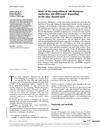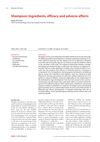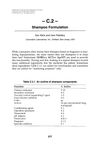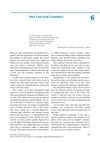Shampoo Compositions
November 2011
anionic surfactants amphoteric surfactants nonionic surfactants SLES SLS CAPB CME CDE alkyl polyglucoside APG polydimethylsiloxane PDMS cationic water-soluble polymers chelating agents pH adjusters pearling agents inorganic salts oils preservatives antidandruff agents fragrances sodium lauryl ether sulfate sodium lauryl sulfate cocamidopropyl betaine cocamide MEA cocamide DEA silicone
TLDR Modern shampoos use a mix of surfactants and other ingredients to clean, reduce irritation, and improve performance.
Modern shampoos from 2011 contained a variety of surfactants to provide cleansing and cosmetic benefits. Anionic surfactants like SLES and SLS were used for cleaning, emulsifying, and foaming. Amphoteric surfactants such as CAPB increased viscosity and reduced irritation, making them suitable for mild formulations like baby shampoos. Nonionic surfactants like CME and CDE acted as foam boosters and viscosity builders. Alkyl polyglucoside (APG) was favored for its low toxicity and environmental compatibility. Conditioning agents like PDMS and cationic water-soluble polymers were included to enhance conditioning effects. Additional ingredients like chelating agents, pH adjusters, pearling agents, inorganic salts, oils, preservatives, antidandruff agents, and fragrances were also used to improve the overall performance and appeal of shampoos.




